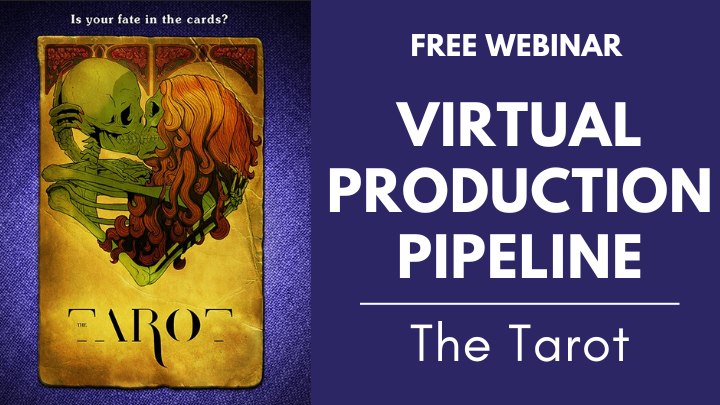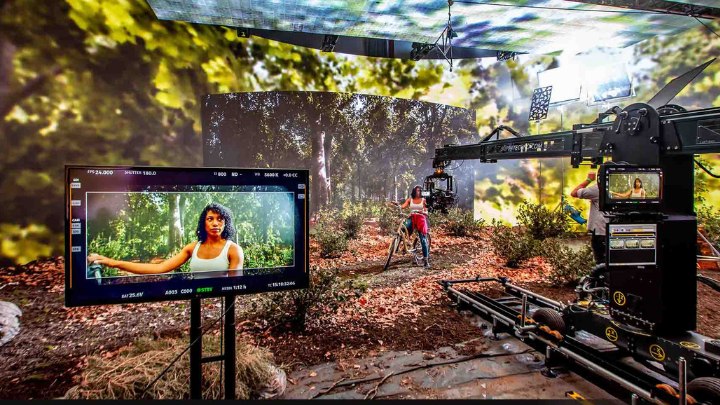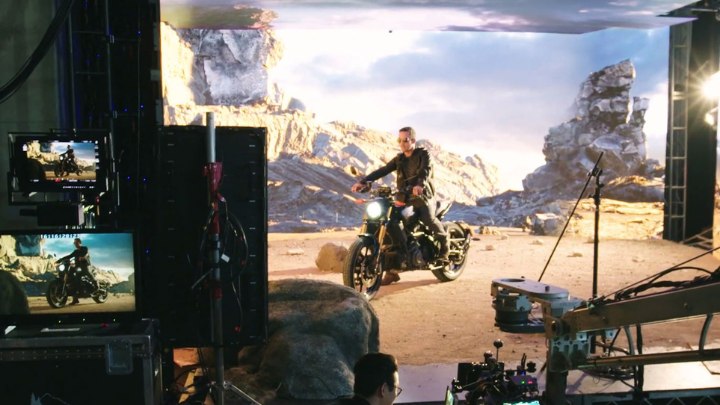
Technology is evolving in a jet speed. It has been observed in all the areas of interaction. From smartphone to gadgets, it has been evident that every day there can a new update or some new brand coming alive. Not only Media & Entertainment, but it has been penetrated in various other verticals like automotive, construction, education, medical, logistics and so on. Same has been true for cinema and movies at large with the advancements in the Virtual Production Pipeline.
VP (Virtual Production) is helping a lot for faster content creation and overall filmmaking. Let it be OTT or traditional movie, industry people are accepting on a wide level. It has dramatically transformed the way we used to conceptualize and shoot earlier. It offers more dynamic and immersive approach that enhances creativity and support for cost effectiveness.
What is Virtual Production?
Traditionally, film making was relied heavily on physical sets, which also involved the work of location hunting. The advent of virtual production has introduced a paradigm shift in this entire industry. Virtual production (VP) is a filmmaking process that combines live-action footage with computer-generated imagery (CGI) in real time. In this system, 3D digital environments and characters (CGI models) can be seamlessly integrated into live-action footage. In simple terms, VP allows directors to create realistic environments and effects without having to build physical sets or travel to expensive locations.
This instant compositing of the physical things and digital assets enables filmmakers to take on the fly decisions. It supports to narrate their story in a better manner. VP cuts their dependency of post production process. So, there is no compromise to convey his/her vision to the audience. The overall technology supports to achieve new heights of storytelling in a seamless manner.
VP has changed the future of filmmaking process from scratch. Such tech craft gives visually stunning cinematic experience like never before. In a very short span of time, it has become a global phenomenon in the league of directors and story tellers. According to the official future technology reports, virtual production spending is projected to reach $4.5 billion by 2025. Major studios and production companies are investing heavily in this technology to enhance their creative capabilities and streamline production processes.
Independent filmmakers and smaller studios are also joining this band wagon. The kind of creative liberty it offers, is the pivotal for entire paradigm shift for all of them. Slowly and steadily, VP will go in all genres of film making. It has actually evolved as a game changer in the Media & Entertainment industry.
How Virtual Production Pipeline works?
The virtual production pipeline consists of various complex processes that encompasses pre-production, production, and post-production stages of the entire workflow. This is achieved using a variety of cutting edge technologies, including LED (Light Emitting Diode) walls, motion capture, and camera tracking.

Given below is the various stages of virtual production pipeline.
- Pre production: It starts from the initial conceptualization of 3D assets and virtual sets (modeling, texturing, lighting). It also consists of camera movements and sequences.
- Production: The CG environment is cast on the LED walls. Physical actors perform in the this virtual background / 3D environment.
- Post production: Instantly, it gets composited with the CGI background with the help of real-time rendering engines. It cuts the required mattes (alpha renders) on the fly to define background and foreground. You can change the 3D background and lighting conditions instantly as per the requirements to get different look and feel of the same shot. The final post production shots appears on the screen.
Motion capture technique is used in the Post production cycle. It records the movements of an actor and translates them into CGI. The volume capture gets data of the movements and appearance of an actor or object from all angles, to create realistic 3D models of actors and objects. It all gets synced via 3D camera tracking. So, the movement of physical actors are always in perspective / aligned with the 3D environment.
Having said all these, the creation of such immersive experience is not as simple as it sounds. There are so many technical challenges like skilled manpower, a huge space for LED walls and camera movements, a glitch free sync of all hardwares and softwares etc. But, with each project, we are improving the virtual production pipeline to make it hassle free. It is leading to a comprehensive solution, with taking inputs of various veteran artists and technicians.
Benefits of virtual production
Such revolutionizing technique has blurred the boundaries between physical and digital world.
- This ground breaking technology has immense potential for redefining a better storytelling.
- The parallel workflow gives the creative freedom to the director and content creators.
- The collaboration between filmmakers is increase, as they can see the final product in real time and make changes on the fly.
- Post production work is reduced, which leads to cost cutting.

In a nutshell, VP has disrupted the typical filmmaking process. Such evolution has taken a giant shape in very less time. It continuously pushes the envelope for better output in cost and time effective manner.
Case study movies of virtual production technology
There are so many in capacity of small shots to big sequences. But, some of the most notable movies which used VP are The Mandalorian, Avatar series, and Top Gun: Maverick. Avatar 2’s virtual production took the internet on storm when its before and after images and interviews were surfaced. James Cameron has worked extensively on latest technologies for the second chapter of this epic saga.
Disney’s “The Mandalorian” will always be remembered as a milestone project. The series used an innovative virtual production pipeline, featuring a massive LED volume known as “The Volume”. This technology allowed the production team to generate 3D photorealistic backgrounds in real time. As mentioned earlier, it cut the cost of physical sets and extensive location shoots. “The Mandalorian” has set a new standard for visual storytelling and has been widely acclaimed for its groundbreaking approach.
Virtual Production Pipeline of ‘The Tarot’ by Asifa India and Peter Hyoguchi
Peter Hyoguchi has release the new movie titled ‘The Tarot’, whose filmmaking is mix of traditional and virtual production. With so many special credits in his portfolio, he incepted the VFX studio Roninfilm. It worked on the projects including Lavalantula, Spiders 3D and the The New Kind.
For his earlier project titled “Gods of Mars”, he collaborated with Unreal Engine game designers and other VFX artists. Peter has taught filmmaking at UCLA Film and TV Extension, New York Film Academy, The Academy of Art University and FIDM.
The latest webinar of ‘The Tarot’ will focus on the virtual production pipeline, used in this movie. In association with Asifa India, Peter will discuss at length regarding various aspects of VP. The essential details of the webinar are as follows.
Date: 30th September, Saturday, 2023
Time: 6 pm IST
Cost: Free
Zoom webinar link: Please click on this webinar registration link to reserve your spot.
Although it is a free webinar, do register asap.
